Hotspot
Any geologist will tell you this place is a smoking gun.
Majestic—yet perilous—Yellowstone showcases exuberant mudpots, frenetic steam vents, an ancient caldera big enough to encompass Tokyo. Burble to surge, nearly 300 volatile geysers wetly punctuate one of the planet’s most geologically active areas.
Charismatic wildlife pose dangers too. Moose amble through gas stations. Surly elk occasionally lower their racks and T-bone passing cars.
Beauty and mystery lock horns with menace and might.
And humans?
All persons traveling through the park from October 1 to June 1 should be regarded with suspicion. So reads a 1907 guidebook. My husband and I regard each other with narrowed eyes. Then laugh. He’s here to complete his “Certified Interpretive Guide Training.” I’m here to chronicle Wonderland, already feeling dwarfed by surroundings, wide-eyed as Alice.
To walk here is to absorb wonder even as you sense simmering violence underfoot.
Magma Schmagma
Shrugging off warnings, some visitors step off boardwalks, risking serious burns. Surfacing water reaches the USDA temperature of fully cooked burgers and whole chickens.
Like plumbing, myriad fractures and fissures beneath the surface gurgle and pour, sometimes reroute themselves overnight.
At Mammoth Hot Springs, snowmelt plus rain-seep percolate underground alongside dissolved carbon dioxide, producing weak carbonic acid, which then dissolves prehistoric limestone deposits, creating calcium carbonate. Swelling emanations terrace themselves, topside, forming ivory steps of travertine.
Rock forms before your eyes.
Amid stony terraces, thermophiles (heat-crazed microorganisms) tapestry slopes with color.
Geologists usually locate magma chambers 40 miles underground. Here molten rock seethes and churns just 2 miles below, relentlessly pushing upward. Central Yellowstone is rising about an inch per year. Were I to stand here until 2050, I’d be buried to my waist.
Jules Verne’s manic Professor Lidenbrock and his makeshift raft come to mind, forced up the fiery volcanic chimney on the crest of a raging, subterranean sea.
Perhaps we people ourselves with characters from books we love, ferry them with us into new settings: Voila!—surprise entrances from the wings of our minds where stories linger.
Geyserific
Established in 1872, Yellowstone now draws more than 3 million global visitors each year, eager to witness the geysers. The word derives from the Icelandic verb, gjosa, meaning “to gush.”
Picture a football field, upended. That’s how high water heaves at unpredictable Steamboat Geyser, largest in the world. With a million gallons of spray airborne, who could remain blasé?
Old Faithful spews enough water to sustain a typical American (100 gallons per day) for an entire summer—every time it erupts.
Venerable Castle Geyser launched its waterworks eons before pyramids shouldered above the desert.
Incredibly, Yellowstone’s yearly outflow would fill Lake Superior—12 times.
No wonder the original Shoshone name for Yellowstone means “water keeps coming out.”
Visiting
Yellowstone National Park remains open all year.
Travel every road and you’ll catch the major features and still see only 2% of the park. Golden “gear jammer” buses await you, complete with guides. Or see the backcountry on foot, horseback, skis, or snow mobile. Rent a bike or canoe, or book Yellowstone’s xanthic stagecoach, bright as an egg yolk.
Most visitors arrive July through August. October means fewer crowds, some snow likely. But who minds sleeping in stocking cap plus hoodie when cobalt skies overarch sagebrush old as our nation? Aspens pay off their summer rent, freely spend their gold.
Our best advice? Drive the sinuous Grand Loop by car, in autumn, heading back down to Gardiner at sunset. Roadway unfurls like petrified spaghetti, touches off frissons along the spine thrilling both psyche and senses. Between foothills and mountains light cross-fades; valleys glow, then plunge into shadow; sunrays spotlight obsidian cliffs, a river, an evergreen grove. For two hours sky colors flare and bleed: gold to melon to rose, lavender, violet, slate-blue to battleship gray pricked by early stars.
According to estimates one-third of Americans will visit Yellowstone National Park.
Will you be one of them?
Also showing . . .
I’ve yet to mention Specimen Ridge, home to the world’s largest concentration of petrified trees, and The Grand Canyon of Yellowstone—deep enough to hold 5 stacked Statues of Liberty.
The Artist Paint Pots, where hot water percolates through multiple minerals, remind me of C. S. Lewis’s sci-fi planet: Perelandra.
I picture Lewis’s intrepid Dr. Ransom, professor of language and literature, ambling along Morning Glory Pool, abloom in acid green, teal, and sienna hues, another astonished linguist, like Adam, the First Man in Genesis, coining new names for earth’s mercurial, fire-born palette.
Stay on this fire-mountain and spend the night among the stars. Watch their glorious bloom until the dawn, and get one more baptism of light. Then, with a fresh heart, go down to your work, and whatever your fate, under whatever ignorance or knowledge you may afterward chance to suffer, you will remember these fine, wild views, and look back with joy to your wanderings in the blessed old Yellowstone Wonderland.
—John Muir, 1898
Postscript Trivia:
Who Slept Here?
A passel of presidents: Chester Arthur reeled in 103 pounds of trout, and Harding hand-fed the bears (note: major no-no). Gerald Ford served as a seasonal park employee in 1936. Kennedy visited two months before he died. Jimmy Carter came, as did the Clinton family.
Celebrity Gary Cooper spent four years as a “gear jammer” tour guide before heading to Hollywood.
Smoldering lovers Mary Pickford and Douglas Fairbanks filmed Cupid Angling here, the first full-length movie shot in color. Commentators claim their affair still eclipses Brangelina.
Sci-fi lovers know Star Trek’s planet Vulcan as Mammoth Hot Springs, where fevered steam rises amid travertine terraces like Greek ruins.
Sources & further reading:
Take this quiz about Yellowstone before October 29, 2017, and $1.00 will be donated to help Yellowstone Forever preserve this wonderland for generations to come.
Yellowstone National Park Literature
Ranger Talk, “Hidden in Plain Sight,” Leslie Quinn, 10/3/2017
Yellowstone Trivia, Janet Spencer, Riverbend Publishing (Helena, MT: 2006)
Browse more Regional Tours
Featured image by Maureen, Creative Commons license via Flickr. Post by Laurie Klein, author of the poetry collection of Where the Sky Opens. Post photography by Laurie Klein. Used with permission.
__________________________

“I require all our incoming poetry students—in the MFA I direct—to buy and read this book.”
—Jeanetta Calhoun Mish
- Poems to Listen By: Yondering—7: When You Came Back - April 16, 2025
- Poems to Listen By: Yondering—6: Restricted Travel - March 26, 2025
- Poems to Listen By: Yondering—5: Upon Arrival - March 12, 2025
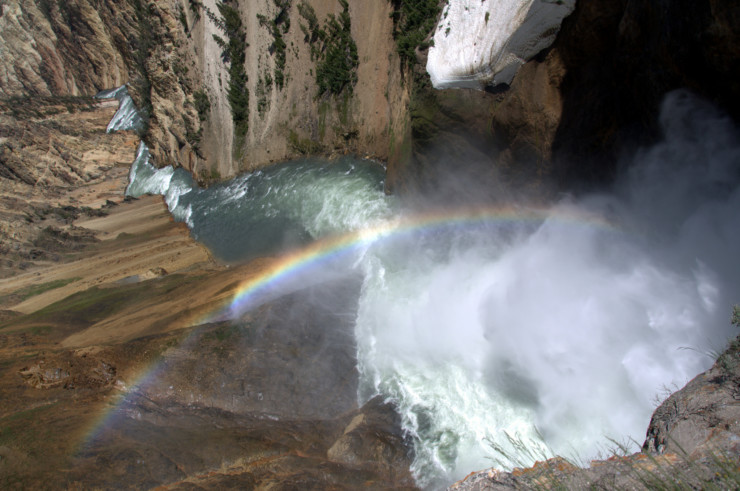
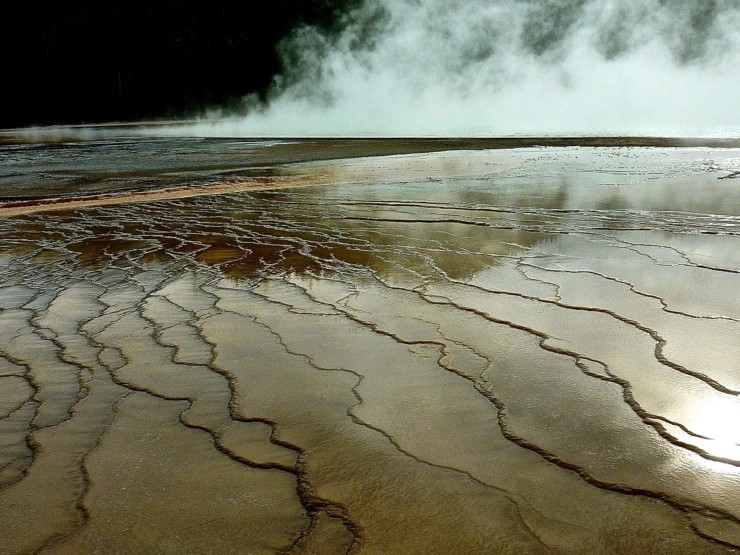
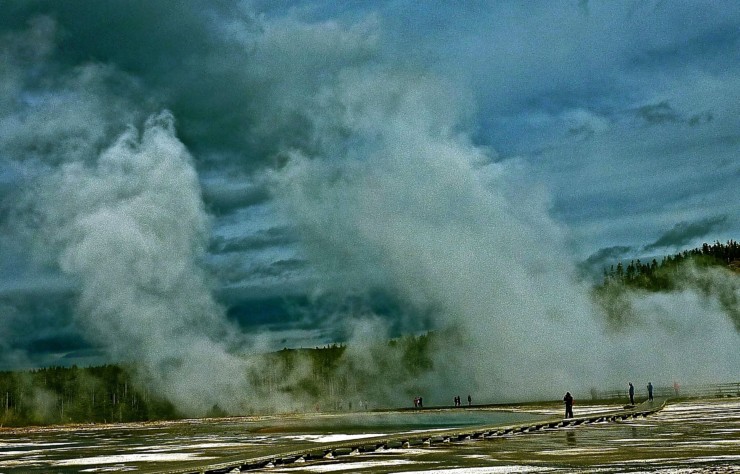
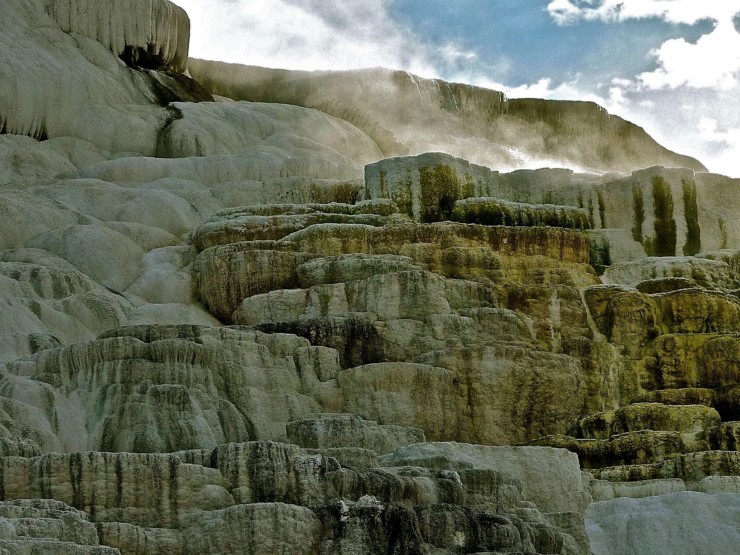
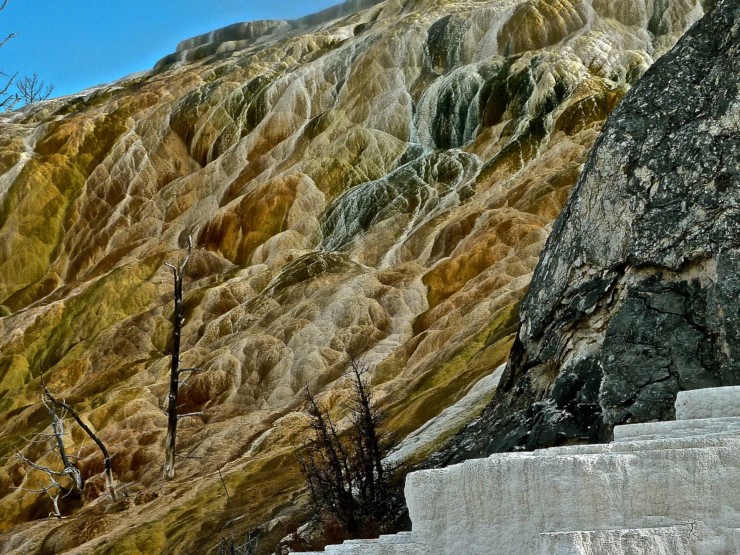
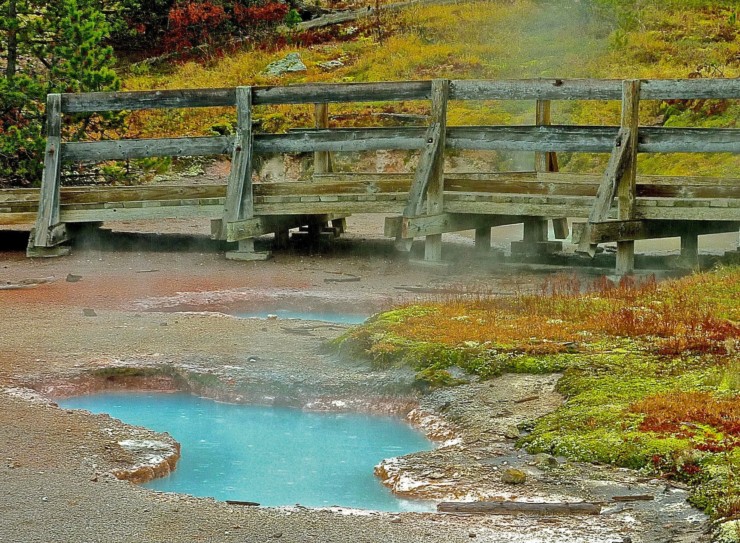
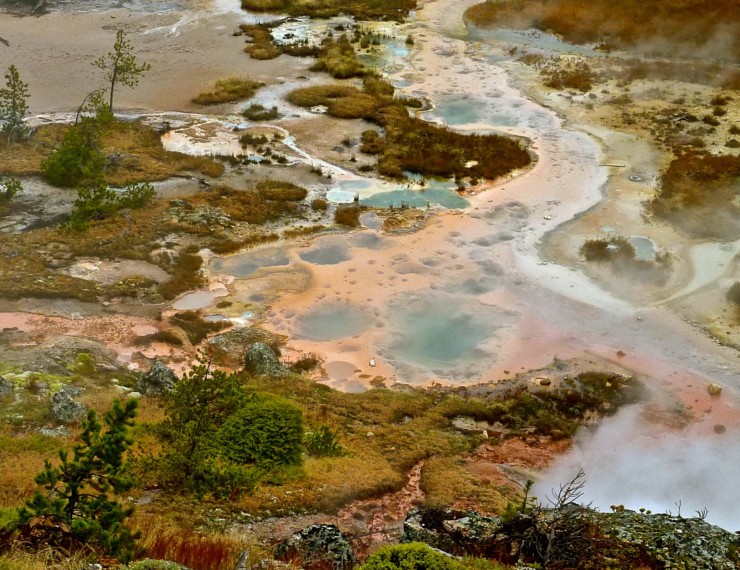
L.L. Barkat says
Laurie, you show the world how being a poet infuses prose writing. I absolutely love all your descriptions, many of them like poems themselves. Such as this one:
“For two hours sky colors flare and bleed: gold to melon to rose, lavender, violet, slate-blue to battleship gray pricked by early stars.”
Yes, I’d like to be one of them, after this awe-inspiring introduction!
Laurie Klein says
L. L., thank you. And thank you again for suggesting I try writing travel pieces!
Some of my favorite essayists are also poets. I wish I had taken photos of the sky show but I was driving. So spectacular watching the moods change. Hope you can visit Yellowstone one day!
Laura Brown says
Poets make enviable essayists. It’s true. Such gorgeous sentences here.
I especially like the imaginative aids — a football field on end, standing in place until 2050 and seeing the ground rise to waist height.
Laurie Klein says
Laura, thank you. The wild, weird beauty of the place inspires language. 🙂
I’m glad the visual aids were helpful. So much of the info I found leaned on statistics, which tend to elude me. I had fun trying to find comparisons. Always good to know what’s working! 🙂
Katie says
Laurie, The images alone in this post are worth scrolling through at least five times and then – add your wonderful descriptions – what a treat!
We visited Yellowstone in 2002 as a family and after reading this I want to return.
Think the John Muir quote you shared was the perfect way to end.
Gratefully:)
Laurie Klein says
Katie, I’m so glad you’ve been there. There’s so much park to see. I feel like I’ve only sampled corners. The moody weather and fall colors enhanced the visuals. I love that Muir quote too. Thanks so much for reading!
Katie says
We were there in the spring time. Such a fascinating place!
Would also love to return to Yosemite and Muir Woods. Hoping to visit Glacier (which we’ve not seen) in a few years.
Laurie Klein says
Now I want to see it in Spring! I have yet to see Muir Woods. My husband hopes to see all the national parks, and I’ve been bowled over again and again by the variety and beauty.
Will Willingham says
“Beauty and mystery lock horns with menace and might.”
Such is the whole world, yes? What one sees and senses in a place like this serve to me of this.
Thank you for such a truly rich and vivid piece. 🙂
Laurie Klein says
Oh LW, thank you for drawing my eye afresh to that line. I was so focused on Yellowstone I hadn’t considered how applicable that is to our world right now.
And thanks for your part in bringing this travel piece forward, looking its best!
Sandra Heska King says
Good gracious, Laurie! This is “literally breathtaking” writing.
“To walk here is to absorb wonder even as you sense simmering violence underfoot.”
“Roadway unfurls like petrified spaghetti.”
“For two hours sky colors flare and bleed: gold to melon to rose, lavender, violet, slate-blue to battleship gray pricked by early stars.”
I’ve never been there–and yet now I have. We, too, would love to see all the parks. But I’d want to start from scratch now because now I see differently.
Laurie Klein says
Sandra, first, let me say again I’m so glad you’re safe!
Yellowstone’s a breathtaking place, such staggering variety—a seemingly measureless, earthly glimpse of what the word “vast” must mean.
I’m grateful to be seeing the parks at my age for the very reason you mention: We see differently these days. Not to mention the free Seniors Pass. 🙂
Donna Falcone says
Oh my, this is wonderful – you create amazing visuals with words alone, and the photos are just breath taking. I visited Yellowstone as a child and the only thing I really remember is that we bumped into a man my dad worked with all the way back in Rochester NY! That amazed me. Small world in a huge world in a small world. After reading this, I want to go back. Seriously. Thank you! I feel excited just thinking about it.
Oh.. and this line:
Beauty and mystery lock horns with menace and might.
That’s just perfection.
Laurie Klein says
Wow, Donna, that memory is powerful, puts a smile on my face just thinking about that encounter through a child’s eyes. Like how powerful relationship is despite physical distance and familiar terrain. And how lucky things happen when you least expect them. And chance. Serendipity. What a riveting take on the grown-up world of possibilities . . . which seems so empowering right now when the world around us careens in danger and disarray.
I hope you write and make art about “a small world in a huge world in a small world.” 🙂